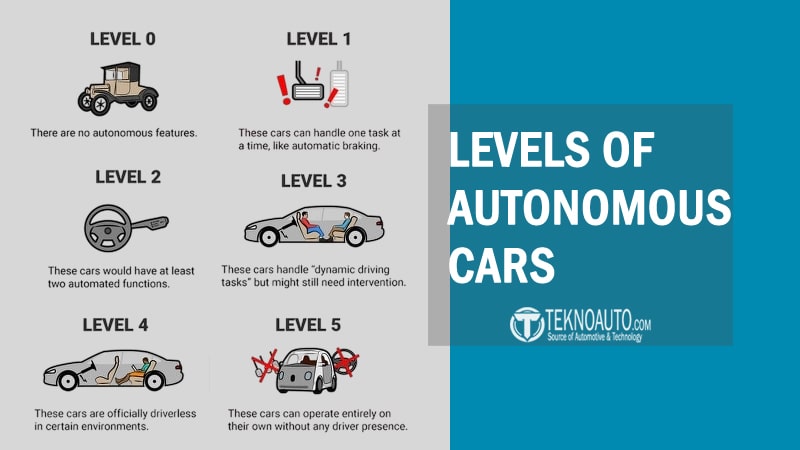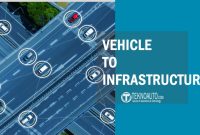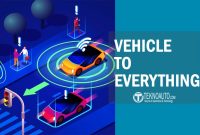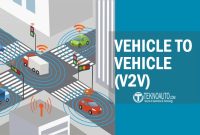The concept of autonomous cars has moved beyond theoretical prototypes and flashy tech expos—it’s now embedded in the roadmap of nearly every major automotive manufacturer. From hands-on driver assistance in modern sedans to driverless shuttles operating in controlled environments, vehicles are becoming increasingly capable of navigating without human input. At the center of this technological transformation lies a structured system developed by the Society of Automotive Engineers (SAE), which defines the six levels of autonomous cars, ranging from Level 0 (no automation) to Level 5 (full autonomy).
Understanding these levels is essential—not just for engineers and policymakers, but for everyday drivers, fleet operators, and anyone interested in the future of mobility. What does it really mean when a car is “Level 3 autonomous”? How much control does the human driver retain at different stages? And more importantly, how close are we to vehicles that truly require no steering wheel, no pedals, and no human oversight?
These levels aren’t just arbitrary labels—they determine how much responsibility falls on the car versus the driver. They shape regulatory frameworks, insurance policies, road safety discussions, and even the user experience of driving itself. As autonomous driving technology continues to evolve, recognizing where a vehicle stands on this scale can help us set realistic expectations—and make smarter choices as consumers.
In this article, we’ll break down each level in plain terms, explore the real-world technologies behind them, and highlight how the auto industry is inching closer to full autonomy. But first, let’s step back and look at how we got here—from the earliest driving aids to the complex AI-driven systems powering the vehicles of tomorrow.
The Evolution Toward Vehicle Autonomy
Driving has come a long way from the mechanical simplicity of early automobiles. What began as a purely manual experience—where every movement relied entirely on human input—has gradually transformed into a system supported by complex software, sensors, and algorithms. Today’s vehicles are no longer just machines of transportation; they are rolling computers capable of perceiving their surroundings, making decisions, and even correcting human error in real time.
This journey toward autonomy didn’t happen overnight. The first major leap came in the form of Advanced Driver Assistance Systems (ADAS), technologies designed to support drivers rather than replace them. Features like adaptive cruise control, automatic emergency braking, lane departure warnings, and blind spot detection are now commonplace—even in non-luxury models. These systems marked the beginning of a shift from reactive driving to predictive driving, where machines assist in anticipating and preventing problems before they happen.
As automakers raced to integrate smarter technology, the need for a standardized framework became clear. In response, the Society of Automotive Engineers (SAE) introduced a classification system in 2014 that defines six distinct levels of autonomous driving, from Level 0 to Level 5. This system not only provides clarity for engineers and developers but also helps regulators, insurers, and consumers understand what to expect from different vehicle capabilities.
Each level represents a step up in automation—from cars that offer basic driver alerts to those that can operate completely without human intervention. The distinctions are critical: A Level 2 vehicle, for instance, might steer and brake on its own, but it still demands the driver’s full attention. A Level 4 vehicle, on the other hand, can drive itself entirely in certain environments, without needing any input from the person in the driver’s seat.
Understanding this progression is more than a technical exercise. It reveals how far we’ve come—and how far we still have to go. With each advancement, we inch closer to a future where driving might no longer be a human responsibility at all. But with that promise comes new challenges in trust, ethics, and regulation that must be addressed along the way.
Next, we’ll break down each of the SAE’s six levels of autonomous cars, exploring what defines them, how they work, and what technologies power each step toward full autonomy.
Understanding SAE’s 6 Levels of Autonomous Cars

To make sense of where a vehicle stands on the autonomy spectrum, the SAE classification provides a clear, standardized framework. Each level—ranging from 0 to 5—represents a progression in how much control the car has versus the human driver. The levels are not just technological milestones; they’re also regulatory and safety benchmarks used by automakers, lawmakers, and transportation agencies worldwide.
The core idea behind the SAE levels is simple: the higher the number, the less human involvement is required. But between Level 0 and Level 5 lies a complex gradient of responsibility, system capability, and environmental constraints.
Before we dive into each level in detail, here’s a quick summary table of what differentiates them:
Table: Overview of SAE Levels of Autonomous Driving
| Level | Name | Primary Control | Driver Attention Required? | Environment Constraints | Examples |
|---|---|---|---|---|---|
| Level 0 | No Automation | Human | Yes | All environments | Basic warning systems only |
| Level 1 | Driver Assistance | Human (with some support) | Yes | All environments | Adaptive Cruise Control |
| Level 2 | Partial Automation | Shared (car + driver) | Yes | All environments | Tesla Autopilot (basic), GM Super Cruise |
| Level 3 | Conditional Automation | Car (with fallback) | Sometimes | Specific conditions (e.g. highways) | Honda Traffic Jam Pilot |
| Level 4 | High Automation | Car | No (in defined areas) | Geofenced / specific zones | Waymo, Cruise, Baidu Apollo |
| Level 5 | Full Automation | Car | No | All environments | Future concept vehicles only |
Now, let’s break down what each level really means—starting from the most basic.
Level 0 – No Automation
At this level, the car provides zero autonomy. All driving tasks—steering, braking, accelerating, monitoring the environment—are handled by the human driver. The only electronic support comes in the form of passive alerts, such as collision warnings or lane-departure beeps. While such systems may sound helpful, they don’t take any control of the vehicle.
Common technologies at this level:
- Lane departure warning
- Blind spot alert
- Forward collision warning
Most older vehicles fall into this category, though even some newer entry-level models with minimal driver aids may still be considered Level 0.
Level 1 – Driver Assistance
Level 1 introduces the first signs of automation, but it’s still minimal. The vehicle can assist with either steering or acceleration/braking—but never both at the same time. The driver must maintain full situational awareness and be ready to take control instantly.
Key example systems:
- Adaptive Cruise Control (controls speed but not direction)
- Lane Keeping Assist (helps steer but doesn’t brake/accelerate)
You’ll find Level 1 capabilities in many mainstream cars today, especially those manufactured after 2015. However, the driver remains fully responsible for vehicle operation.
Level 2 – Partial Automation
At this stage, the vehicle can control both steering and speed simultaneously under specific conditions—usually on highways. While the system can follow lanes, manage speed, and maintain distance from other cars, the human driver must still supervise and be prepared to intervene at any time.
Common Level 2 features:
- Lane centering
- Adaptive cruise with stop-and-go
- Traffic jam assist
Vehicles from Tesla (Autopilot), General Motors (Super Cruise), and Hyundai (Highway Driving Assist) offer Level 2 capabilities. But despite marketing terms like “self-driving,” these systems require constant human oversight.
Level 3 – Conditional Automation
Level 3 marks a major shift in responsibility: the vehicle can fully manage all aspects of driving under specific conditions without constant driver supervision. Unlike Level 2, where the driver must always keep their hands on the wheel and eyes on the road, Level 3 allows the driver to disengage—but only when the system signals it’s safe to do so.
However, the human driver must remain available to take over if the system requests it, especially in scenarios it can’t handle, such as unexpected weather changes or construction zones.
Key characteristics of Level 3 autonomy:
- The system performs dynamic driving tasks (steering, braking, acceleration, environmental monitoring)
- Limited to defined environments like highways or low-speed traffic
- Requires a handover mechanism for human intervention
Real-world example:
- Honda Legend with Traffic Jam Pilot, released in Japan, is one of the few certified Level 3 vehicles
- Audi was first to develop Level 3 (A8), but postponed launch due to regulatory uncertainty
The promise of Level 3 is convenience, but it also raises new legal and ethical questions: Who is liable during the transition of control? That’s one reason why most automakers are either skipping Level 3 or approaching it cautiously.
Level 4 – High Automation
At Level 4, the vehicle can handle all driving functions without any human input—but only within specific geofenced areas or conditions, such as certain city zones or fixed shuttle routes. Unlike Level 3, Level 4 vehicles do not require a fallback driver within those operational domains.
In other words, even if a human doesn’t respond to a request for control, the vehicle can still bring itself to a safe stop or complete the route autonomously.
Common use cases for Level 4:
- Autonomous ride-hailing services
- Urban delivery robots
- Campus or airport shuttles
Active deployments:
- Waymo (a subsidiary of Alphabet/Google) is operating Level 4 robotaxis in Phoenix and San Francisco
- Cruise (by General Motors) runs fully autonomous cars in several U.S. cities
- Baidu Apollo Go is deploying Level 4 taxis in multiple Chinese urban areas
Despite functioning without human input, Level 4 vehicles are limited by maps, weather, and predefined zones. They aren’t yet able to handle every road or condition—making them extremely capable, but not fully generalizable.
Level 5 – Full Automation
Level 5 represents the ultimate vision: a vehicle that can drive anywhere, at any time, in any condition—with zero human involvement. There are no steering wheels, no pedals, and no expectations of a human to ever take over. Passengers are just that: passengers.
This level of automation doesn’t yet exist in real-world deployments, though it remains the North Star for many developers and researchers.
The defining traits of Level 5 autonomy:
- Operates under all conditions and environments
- Doesn’t require a human presence or fallback
- Suitable for private use, public transport, and freight
Current status:
- Several concept cars have been unveiled (e.g., from Mercedes-Benz, Tesla, and Nuro)
- Testing is ongoing in simulated and real-world conditions
- Major roadblocks: unpredictable environments, regulatory gaps, AI limitations, and public trust
The leap from Level 4 to Level 5 is enormous—not just technologically, but socially and legally. It requires not just better sensors or faster processors, but a full rethinking of how transportation systems are built, regulated, and integrated into everyday life.
Comparing the Levels: Key Differences That Matter
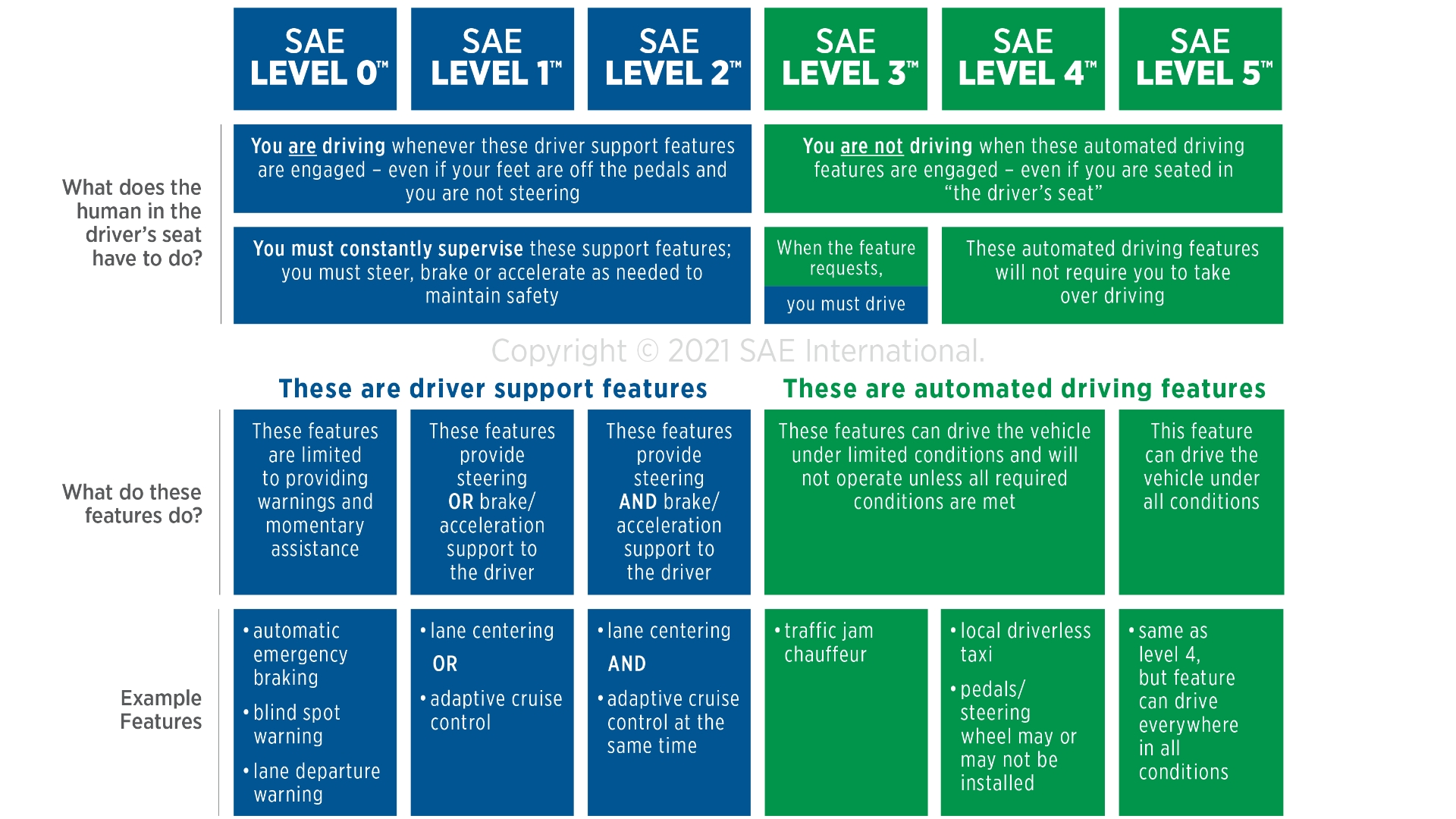
While the six levels of autonomous driving may seem like a smooth, linear progression, the differences between them are both nuanced and significant. These distinctions go far beyond marketing terms—they define how a vehicle behaves on the road, how much responsibility the driver holds, and what environments the system is actually equipped to handle.
Here’s how the core differences break down across the levels:
1. Who Controls the Vehicle?
The most fundamental distinction lies in control:
- Levels 0 to 2 are considered driver support systems. The driver is always in charge and responsible for the vehicle, even when certain automation features are active.
- Levels 3 to 5 are classified as automated driving systems, where the vehicle itself becomes the primary decision-maker under specific conditions.
In short, the line between Level 2 and Level 3 represents a legal and practical transfer of responsibility from human to machine.
2. Environmental Constraints
- Lower levels (0–2) operate in any driving environment, but always under human supervision.
- Levels 3 and 4 function only in Operational Design Domains (ODD)—predefined scenarios like highways, cities, or clear weather.
- Level 5 is intended to handle all conditions, everywhere, with no limitations.
3. Human Intervention Requirements
- At Level 0, the driver must perform all tasks at all times.
- Level 1 and 2 offer support (steering or speed), but still require hands on the wheel and eyes on the road.
- Level 3 allows temporary disengagement, but the driver must be able to intervene quickly when requested.
- Level 4 eliminates the need for intervention within its ODD—even if the driver ignores a takeover request.
- Level 5 never expects or requires human control, under any circumstances.
4. System Redundancy and Fail-Safe Capabilities
As levels increase, vehicles require increasingly advanced redundant systems—from multiple sensors to backup steering and braking modules.
- Levels 0–2 rely heavily on driver judgment.
- Level 3+ systems must detect when they’re unable to perform and initiate a safe fallback maneuver.
- Level 4 and 5 need robust fail-operational systems capable of completing a trip or pulling over safely if something goes wrong.
5. Examples and Deployment Readiness
| Level | Control | Human Needed? | Deployment Status |
|---|---|---|---|
| Level 0 | Human | Always | Ubiquitous in older vehicles |
| Level 1 | Human w/ support | Always | Widespread (adaptive cruise, lane assist) |
| Level 2 | Shared | Always | Common in Tesla, BMW, Hyundai, etc. |
| Level 3 | System (limited) | Sometimes | Very limited (Honda, some Audi models) |
| Level 4 | System (full ODD) | No | Active in robotaxi pilots (Waymo, Cruise) |
| Level 5 | System (anywhere) | No | Not yet available, in R&D phase |
Understanding these differences is essential for consumers, regulators, and developers alike. Misinterpreting what a vehicle can or cannot do—especially at Level 2 or Level 3—can lead to dangerous overreliance on systems that are not designed to replace human judgment.
Real-World Examples of Each Level
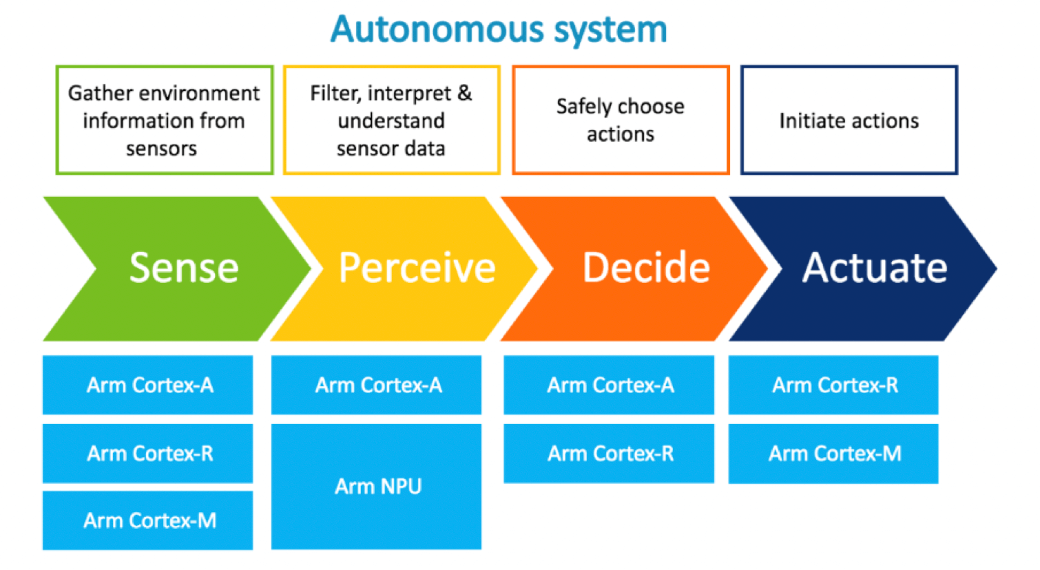
Understanding the theory behind autonomous driving levels is one thing—but seeing how these levels apply to actual vehicles on the road makes the concept far more tangible. Across the automotive industry, companies are adopting different levels of automation based on their strategic goals, technology readiness, and regulatory environments. Here’s how the SAE levels translate into real-world applications and vehicles you may already know—or will soon see on public roads.
Level 0 – No Automation
Most vehicles manufactured before 2010, and many budget models even today, fall into this category. They may include basic driver alerts, but no system actively controls driving functions.
Examples:
- Older sedans or compact cars with no ADAS features
- Vehicles with passive systems like:
- Lane departure warning
- Forward collision alert
- Parking sensors
These features are reactive, not autonomous—they only alert the driver, never act on their behalf.
Level 1 – Driver Assistance
Vehicles in this category offer a single automated function, such as maintaining speed or steering, but not both simultaneously. The driver remains in full control at all times.
Examples:
- Toyota Corolla with Dynamic Radar Cruise Control
- Mazda CX-5 with lane-keep assist
- Ford Focus with adaptive cruise control
Level 1 systems are now standard in many mid-range models, helping improve comfort and safety, especially on long highway drives.
Level 2 – Partial Automation
Here, vehicles can manage both steering and acceleration/braking at the same time—but only in specific conditions. The driver must monitor the system continuously and be ready to intervene instantly.
Examples:
- Tesla Autopilot (basic and enhanced)
- General Motors Super Cruise
- Hyundai Highway Driving Assist (HDA)
- Ford BlueCruise
Despite marketing terms like “hands-free,” these vehicles still require active driver engagement, and accidents have occurred when drivers misunderstood their role.
Level 3 – Conditional Automation
At this level, the car takes over all driving tasks in certain environments, such as slow-moving traffic on highways. Drivers can divert their attention temporarily—but must be ready to respond when prompted.
Examples:
- Honda Legend (Traffic Jam Pilot) – released in Japan in 2021
- Mercedes-Benz Drive Pilot – approved for limited use on German autobahns
- Audi A8 – initially designed for Level 3 (Traffic Jam Assist), though deployment delayed by regulation
Real-world deployment of Level 3 is still very limited due to legal ambiguity and concerns about handover reliability between system and human driver.
Level 4 – High Automation
Vehicles at Level 4 can operate without human intervention in specific areas, such as urban zones mapped in detail (a geofenced domain). No steering wheel or pedals are required—but the system won’t function outside its designed environment.
Examples:
- Waymo (Alphabet/Google) – operating driverless taxis in Phoenix and San Francisco
- Cruise (General Motors) – driverless urban rides in select U.S. cities
- Baidu Apollo Go – robotaxi service in Beijing, Wuhan, and other Chinese cities
- Navya & EasyMile – autonomous shuttles for airports, campuses, and business parks
These vehicles are not available for private ownership yet—they’re primarily part of public or pilot fleet services.
Level 5 – Full Automation
This level remains the goal, not the present reality. No production vehicle on the road today qualifies as Level 5. Cars at this stage would operate fully autonomously under all conditions, without geofencing, weather limitations, or human oversight.
Examples (conceptual and testing):
- Tesla Full Self-Driving (FSD) – currently marketed as Level 2–3, but Elon Musk aims for Level 5
- Nuro R2 – autonomous delivery vehicle with no cockpit
- Mercedes-Benz F 015, Volvo 360c, Toyota e-Palette – concept cars designed for Level 5 capabilities
- Ongoing research at Waymo, Zoox (Amazon), Apple, and other tech/auto partnerships
Despite rapid progress in AI and sensor technologies, Level 5 autonomy still faces major technical, ethical, and regulatory challenges. Experts believe it may take another decade—or longer—before it becomes a safe, scalable reality.
Challenges in Achieving Full Autonomy
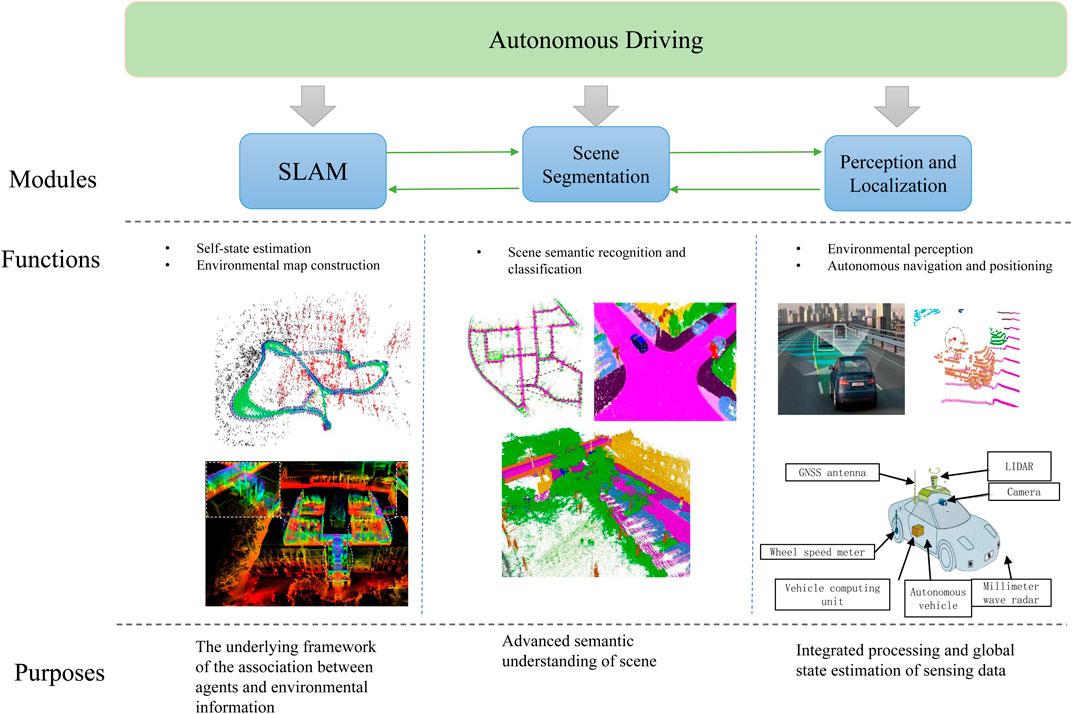
While the race toward fully autonomous vehicles is accelerating, the road to Level 5 autonomy is far from smooth. Despite billions of dollars invested, breakthroughs in AI, and rapid hardware development, numerous technical, regulatory, and societal barriers still stand in the way. Understanding these challenges is critical—not only for engineers and policymakers but also for consumers and city planners who will live with the impact of this technology.
1. Technological Complexity
At its core, full autonomy requires a vehicle to perceive its environment with near-human accuracy—and respond in real time to countless unpredictable variables.
- Sensor limitations: Even with Lidar Technology, radar, cameras, and ultrasonic sensors working in tandem, adverse weather (rain, snow, fog) and low-light conditions still degrade sensor performance.
- Edge cases: Autonomous systems struggle with rare or unexpected events, like a pedestrian in a costume, a traffic officer waving cars through a red light, or debris on the road.
- AI interpretation: Understanding human behavior—eye contact at intersections, gestures from cyclists, or subtle changes in vehicle movement—is difficult to program reliably.
- Processing power: Real-time decision-making at highway speeds demands immense computational power, optimized algorithms, and ultra-low latency systems.
2. Infrastructure and Urban Readiness
Even the most advanced autonomous vehicle can only perform as well as the environment it operates in.
- Road markings and signage: Faded lines, inconsistent signage, and unstructured roads (common in many countries) make navigation harder for machines than for humans.
- Connectivity: vehicle-to-everything (V2X) communication, HD mapping, and real-time updates require robust 5G or high-bandwidth networks—not yet widely deployed.
- Geofencing limitations: Current Level 4 systems rely on pre-mapped zones. A fully dynamic environment would require real-time, constantly updated maps at a global scale.
3. Regulation and Legal Uncertainty
Autonomous vehicles introduce a new legal paradigm that current traffic laws were never designed to accommodate.
- Liability: Who is at fault in an accident involving an AV—manufacturer, software developer, owner, or the vehicle itself?
- Insurance frameworks: Traditional car insurance is based on driver behavior. Autonomy shifts that to product liability and system risk.
- Global inconsistency: Laws vary by country, state, and city—causing a fragmented legal landscape for global deployment.
- Testing limitations: Real-world testing is highly restricted in some jurisdictions due to safety concerns and public backlash.
4. Public Trust and Ethical Dilemmas
For widespread adoption, people must be willing to ride in and share the road with driverless vehicles.
- Trust gap: High-profile crashes involving Tesla or Uber autonomous test vehicles have generated skepticism about system safety.
- Transparency issues: Most AV systems operate as black boxes. Users don’t understand how decisions are made, or why a car behaves a certain way.
- Moral questions: In unavoidable accidents, how should an AV decide whom to prioritize—the driver, passengers, or pedestrians? These “trolley problem” scenarios remain deeply controversial.
5. Cost and Commercial Viability
Even if the technology works perfectly, scaling it to the mass market presents another major challenge.
- Hardware expense: LiDAR sensors alone can cost thousands of dollars—making AVs unaffordable for many consumers.
- Maintenance & calibration: Complex sensor arrays require constant tuning and specialized service, unlike traditional vehicles.
- Business model uncertainty: Should AVs be privately owned, shared, leased, or fully fleet-operated? Different use cases lead to vastly different economic models.
While progress continues on every front, most experts agree that Level 5 autonomy will require not just better technology, but better roads, smarter policies, and broader societal adaptation. Until then, the focus remains on expanding and refining Levels 3 and 4 in controlled environments.
The Future of Autonomous Driving: Are We Ready for Level 5?
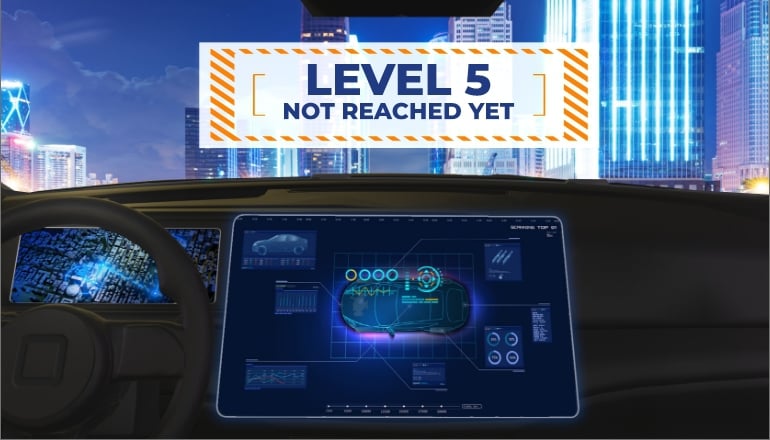
For years, Level 5 autonomy has been portrayed as the ultimate destination—a future where vehicles seamlessly drive themselves in all environments, without any need for human oversight. But as real-world deployments evolve and technological realities set in, that vision is beginning to look more like a long-term goal than an imminent milestone.
So, where do we really stand? And what can we expect in the next decade?
A More Realistic Roadmap
Despite bold promises from automakers and tech CEOs, most industry experts now agree: Level 5 is not “just around the corner.”
Progress is being made, but the complexity of achieving universal autonomy—across cities, rural roads, extreme weather, and unpredictable human behavior—requires a timeline measured in years, possibly decades.
Instead of jumping directly to Level 5, the industry is focusing on refining Levels 3 and 4, which are more practical and immediately applicable in well-defined environments.
- Level 3 systems are gradually being introduced in high-end consumer vehicles for specific conditions (e.g., highway traffic jams).
- Level 4 systems are proving effective in geofenced urban zones, such as robotaxi services in San Francisco, Phoenix, and several Chinese cities.
Rather than fully replacing drivers, the near-term future may focus on blending automation with human oversight—a hybrid model where autonomy takes the wheel only when it’s best equipped to handle the situation.
Societal Shifts and Urban Planning
The rise of autonomous vehicles is poised to reshape cities, infrastructure, and the way people move.
- Parking may become obsolete in urban centers as AVs drop off passengers and relocate themselves.
- Public transportation models could shift to flexible, on-demand autonomous shuttles and minibuses.
- Suburban expansion might accelerate if commuting becomes less stressful and more productive.
- Delivery and logistics—especially last-mile transport—stand to be revolutionized by fully autonomous pods and robots.
However, these benefits hinge on regulatory alignment, infrastructure investment, and most importantly—public acceptance.
Human Drivers in an Autonomous World
One important question remains: Will human drivers still have a place in a fully autonomous ecosystem?
The answer is yes—but with caveats.
- In some urban cores, we may see zones that restrict human drivers entirely, optimizing traffic flow for AVs only.
- In rural areas and developing regions, manual driving will likely persist for decades due to cost and infrastructure limitations.
- Car enthusiasts and traditionalists will likely continue driving, perhaps limited to designated lanes or recreational areas.
Rather than replacing the driver entirely, the more likely scenario is coexistence: a transitional period where AVs and human-driven cars share the road, supported by intelligent systems that reduce conflict and enhance coordination.
What It All Means
Level 5 autonomy may still be on the distant horizon, but that doesn’t mean progress isn’t real—or meaningful. Each step forward, from Level 2 highway assist to Level 4 robotaxis, contributes to a safer, more efficient, and more accessible transportation future.
The challenge is no longer just about building smarter cars. It’s about building a smarter world for those cars to operate in.
Conclusion
The journey from fully manual driving to complete autonomy is more than just a technological progression—it’s a redefinition of what it means to drive. The six SAE levels of autonomous cars serve as a critical roadmap for understanding where we are today, what each step entails, and how close we truly are to a future where vehicles drive themselves.
Each level, from 0 to 5, reflects a shift not just in vehicle capability, but in driver responsibility, legal accountability, and system trust. Recognizing the difference between, say, Level 2 partial automation and Level 3 conditional autonomy isn’t just technical trivia—it’s essential knowledge for consumers making informed decisions about safety, usability, and expectations.
While Level 5 autonomy remains a vision still out of reach, Levels 3 and 4 are actively shaping the transportation landscape. Robotaxis are already operating in select cities. Luxury vehicles are handling slow traffic with minimal driver involvement. And advanced ADAS systems are becoming standard features in everyday cars.
But technology alone won’t get us there. Legal frameworks, public trust, infrastructure readiness, and ethical alignment must evolve alongside hardware and software. The path to autonomy is not a sprint—it’s a complex, multidimensional transition that requires cooperation across industries, governments, and society at large.
As autonomous driving continues to develop, understanding its levels helps us stay grounded in what’s real, what’s emerging, and what still lies ahead. Whether you’re a driver, a developer, or simply a curious observer, knowing where we are on the autonomy spectrum equips you to navigate the future of mobility—safely, smartly, and with eyes wide open.
FAQ About Levels of Autonomous Cars
What are the 6 levels of autonomous cars?
The 6 levels of autonomous driving, defined by SAE International, range from Level 0 (no automation) to Level 5 (full automation). Each level represents a progression in vehicle capabilities and the extent to which a human driver is required to monitor or control the vehicle.
Are Level 5 autonomous cars available today?
No, Level 5 vehicles—which can drive themselves in all conditions without any human input—do not yet exist. Current technology is primarily limited to Level 2 (partial automation) and experimental Level 4 systems operating in specific urban zones.
What’s the difference between Level 3 and Level 4 autonomy?
Level 3 allows the car to drive autonomously under certain conditions but requires the driver to be ready to take over when prompted. Level 4 does not require driver intervention in defined geofenced areas, though the system may still hand off control outside those zones.
Is Tesla Autopilot considered fully autonomous?
No. Tesla’s Autopilot and Full Self-Driving (FSD) are currently classified as Level 2 systems. They assist with steering, acceleration, and braking but still require constant human supervision and readiness to take over at any moment.
When will self-driving cars become mainstream?
Widespread use of autonomous vehicles depends on multiple factors: technological maturity, regulatory approval, infrastructure development, and public trust. Most experts predict Level 4 autonomy may expand in the next 5–10 years, but Level 5 could take decades to fully materialize.

